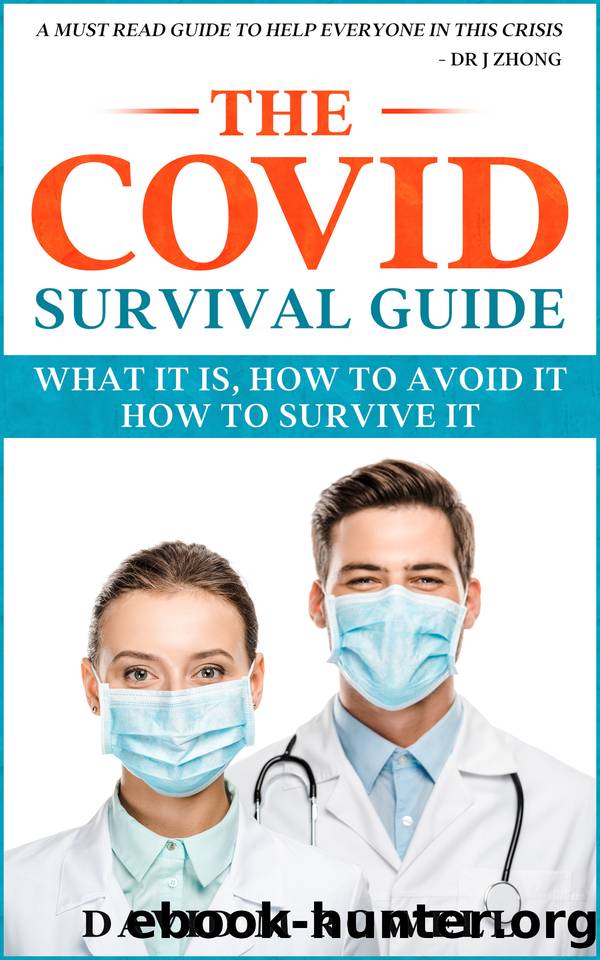The Covid Survival Guide: What the Virus Is, How to Avoid It, How to Survive It by Rowell David

Author:Rowell, David [Rowell, David]
Language: eng
Format: epub
Publisher: Aramoana Publishing
Published: 2020-12-24T16:00:00+00:00
Figure 55 Relative risks of activities and settings
The higher the risk, the more you want to compensate by increasing the distancing, being sure to wear a mask, and minimizing the time in such a situation.
The Second Factor â Time
A good way of thinking of the risk of catching the virus is to think of the virus as having similar properties and threats to our health as does radiation.
Many of us are familiar with, from movies or real life, the staccato sound of Geiger counters and understand how radiation risk is a function of both the strength of the radiation and how long weâre exposed to it. It is almost exactly the same with the virus.
The preceding section was all about the âstrengthâ or concentration of the virus (as a function of distance). The other part of understanding your risk is the time youâre exposed to it.
This doesnât require a lot more explanation. Simply stated, any time youâre in a place of elevated risk, try and spend as little time there as possible. Be quick when you go shopping. Have a shopping list, know where you need to go in the store as best you can, and donât linger. If you need to converse with someone else, as well as keeping your distance, be brief. If youâre told something will be ready in five or ten minutes, wait outside not inside. And so on.
Each extra breath you take in a higher-risk environment is more opportunity for more virus particles to be inhaled. Ultimately, catching the virus is all about inhaling sufficient virus particles to allow the virus to establish itself. That either means inhaling a few breaths of unusually contaminated air or spending more time inhaling not quite so severely contaminated air.
Additionally, the sooner you leave a risky environment, the more immediate is the end of the virus being given more âreinforcementsâ with each successive breath you take.
The CDC Guideline on When Risk Becomes Significant
The CDC updated its guidelines for determining if a person may have had a significantly risky contact with another person, in mid-October.
Previously their guideline was that contact between two people involved a significant chance of passing the virus from one person to the other if it was for at least 15 consecutive minutes.
Now, perhaps as part of their slow and seemingly grudging acceptance of the risk of aerosol spread, they are saying that the 15 minutes need not be a single period of continuous contact, but could be a series of shorter exposures that in total come to 15 minutes within any 24 hours.
This is an easier risk factor to trigger. You can probably think of people in your work environment who you interact with regularly during a day, but with each interaction being no more than a minute or two. Previously, that was officially deemed to be safe. Now the CDC says it is dangerous. we agree with them, although there are some simplifications â 15 one minute exposures, evenly spaced over 24 hours, is not
Download
This site does not store any files on its server. We only index and link to content provided by other sites. Please contact the content providers to delete copyright contents if any and email us, we'll remove relevant links or contents immediately.
| Administration & Medicine Economics | Allied Health Professions |
| Basic Sciences | Dentistry |
| History | Medical Informatics |
| Medicine | Nursing |
| Pharmacology | Psychology |
| Research | Veterinary Medicine |
Machine Learning at Scale with H2O by Gregory Keys | David Whiting(2290)
Fairy Tale by Stephen King(2069)
Will by Will Smith(2041)
Hooked: A Dark, Contemporary Romance (Never After Series) by Emily McIntire(1959)
Rationality by Steven Pinker(1765)
The Becoming by Nora Roberts(1330)
Friends, Lovers, and the Big Terrible Thing by Matthew Perry(1327)
A Short History of War by Jeremy Black(1300)
HBR's 10 Must Reads 2022 by Harvard Business Review(1256)
The Strength In Our Scars by Bianca Sparacino(1244)
515945210 by Unknown(1207)
Fear No Evil by James Patterson(1109)
Love on the Brain by Ali Hazelwood(1095)
Bewilderment by Richard Powers(1083)
443319537 by Unknown(1072)
The Real Anthony Fauci: Bill Gates, Big Pharma, and the Global War on Democracy and Public Health (Childrenâs Health Defense) by Robert F. Kennedy(1065)
Leviathan Falls (The Expanse Book 9) by James S. A. Corey(1030)
The Psychiatric-Mental Health Nurse Practitioner Certification Review Manual by Zakhari Raymond DNP EdM ANP-BC FNP-BC PMHNP-BC;(1028)
Works by Richard Wright(1018)
